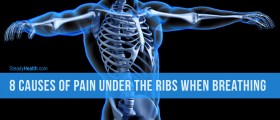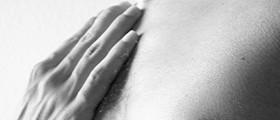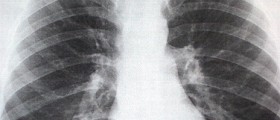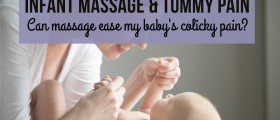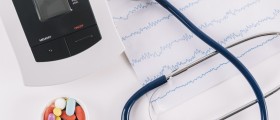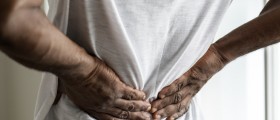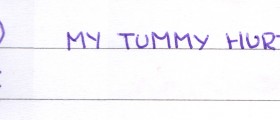Hey,
I feel this pain under left rib cage for the past three days. Sometimes it feels like needles itching. Anyone has any idea what this might be?
Loading...
Hello,
That could be spasms of the spleen… well that was my case. However, you should see your doctor.
Loading...
pain may also be a symptom of costochondritis. If you have costochondritis don’t worry.
Costochondritis is a benign condition. Costochondritis is inflammation of the rib cage
muscles. It is a common cause of chest pain in children and adolescents. Most frequently it
affects young adults between 20 and 40 years old. In contrast to myocardial ischemia or
infarct, costochondritis is a benign cause of chest pain.
Costochondritis occurs in women and people over age 40, can affect anyone, even infants and
children. When costochondritis is accompanied by swelling it is called Tietze's syndrome.
You shoul know that Tietze syndrome is often referred to as costochondritis, but the two are
distinct conditions.
In most of cases the cause is unknown, idiopathic, and costochondritis goes away without
treatment. When the cause is unknown the goal of treatment is pain relief.
If you have chest pain you should know that it is medical emergency. Underlying diseases
which can cause chest pain can be very serious. Chest pain may be caused by heart diseases,
lung diseases, gastrointestinal problems and costochondritis. When you have chest pain your
doctor will first rule out heart disease. You will have some tests; they are needed to rule
out other diseases. If chest pain isn’t caused by heart disease you probably have
costochondritis.
You should know that costochondritis affects more woman than men. In some cases this
condition can be caused by infection.
What are the signs and symptoms of costochondritis?
Pain and tenderness are localized in the places where your ribs attach to your breastbone.
If you have costochondritis you will feel sharp pain or gnawing pain. Pain caused by
costochondritis can occur on either side of your chest, but occurs most often on the left
side of your breastbone. Pain is usually worsened by activity or exercise. Because of the
many nerves that branch away from the chest, you can feel pain in the shoulder or arms as
well.
Most common symptoms of costochondritis are: pain when coughing, pain when taking deep
breaths, difficulty breathing. When you movement stops, pain decreases. Chest pain is
usually preceded by exercise, or an upper respiratory infection or minor trauma. This chest
pain increases as you take deep breath. When you take deep breath you stretch the inflamed
cartilage and that can cause exquisite pain. Sometimes simply touching the area involved
will be extremely painful for you.
What are the causes of costochondritis?
Cause of costochondritis in most of cases is unknown, usually it has no definite cause. But
there are some cases where the cause can be determined. Costochondritis can be caused by
injury; a blow to the chest could also cause costochondritis.
Infection also can be cause of costochondritis. Viral respiratory infections, bacterial
infections after surgery and very rare fungal infection are known causes of costochondritis.
This condition commonly occurs with viral respiratory infections because of the inflammation
rib cage muscles from the viral infection itself, or from straining from coughing. When
costochondritis recurs that can be sign of fibromyalgia. Patient who have fibromyalgia often
have several tender spots. The upper part of the breastbone is a common tender spot.
Repeated minor trauma to the chest wall also can be cause of this costochondritis.
Frequently, surgery to upper chest can be cause of costochondritis.
If you have chest pain you should see a doctor. Only doctor can diagnose costochondritis.
There are difference between costochondritis pain and pain caused by heart attack.
Costochondritis pain is localized on small area, and pain caused by heart attack is more
widespread. Heart attack pain may worsen with stress or physical activity. Costochondritis
pain is constant. Never try to diagnose by yourself chest pain, leave that for your doctor.
Every chest pain should be taken very serious.
Screening and diagnosis
To help your doctor make the right diagnose, you must describe your chest pain. Pain of
costochondritis can be very similar to the pain associated with heart disease, lung disease,
and gastrointestinal problems. So doctors often missdiagnose costochondritis.
Costochondritis is also a common cause of chest pain in children and adolescents.
There are no tests for costochondritis, this condition can't be seen on chest X-rays or
other imaging tests.
When doctor suspect that you have costochondritis my order some tests to rule out other
conditions. The only way to diagnose this condition is to take your personal medical
history and to do physical exam. Costochondritis occurs fairly frequently in people who had
cardiac surgery.
What is the treatment for costochondritis?
Patients with costochondritis usually don’t need any treatment. Costochondritis pain usually
lasts a week or two and then goes away. In some cases doctor can prescribe nonsteroidal
anti-inflammatory drugs such as ibuprofen (Advil, Motrin, others) and naproxen (Aleve). You
should discuss with your doctor about those medication because they have some side effects.
Nonsteroidal anti-inflammatory medications can help decrease symptoms of pain, also they
help decrease inflammation, which is the primary problem. Some doctors prescribed tricyclic
antidepressants if pain is making it difficult to sleep.
Your doctor may give you a local anesthetic and steroid injection in the area that is
tender, if the pain does not respond to medications. Very rare surgery (removal of the
sore cartilage) is performed. If costochondritis is caused by infection usually treatment s
are IV antibiotics.
The pain should improve within a few weeks, and resolve completely within six months.
There are patients in whom this problem persists for some time. If you have chest pain
which last more than few months see your doctor. If you had the costochondritis once that
does not increase your chances of experiencing the symptoms again.
Self - care
There are several helpful things to do in order to help manage the symptoms of
costochondritis. Self - care is most important part of treatment. You should rest, and
avoid activites which make your pain worse. In order to decrease the inflammation, you
should avoid activities that cause pain and inflammation. Deep breathing, exercise, and
strain on the muscles of the chest may worsen pain and slow the healing process. Avoid or
limit activities that worsen your pain.
Walking or swimming can keep your body healthy. When exercise increases your pain you should
stop. Also you can apply heating pad to the painful area several times a day. Local heat or
ice may be helpful to relieve pain. Ice packs or heating ads these techniques help to
decrease your pain may help you better manage your symptoms. You should find out more about
chronic pain. The pain associated with costochondritis significantly improves within the
first 4-8 weeks. Some pain may persist, it is only associated with strenuous activity.
How to prevent costochondritis?
There is no prevention for this condition because costochondritis has no definite cause
Loading...
Tell me about the spleen because I thought this too, but my pain has lasted over 3 months and it hurts to the touch on bottom of left side of rib cage. Read the other article I pos ted too. Did you know about Costochondritis-inflimation of the ribs and rib cage ?
Loading...
Loading...
Costochondritis is a benign condition. Costochondritis is inflammation of the rib cage.
My son, a 17 year old, seems to have this condition. He mentions pain in the sternum area when he runs more than a mile or so in practice. He engages in sports: football, basketball, track and conditioning in the summer.
Would you recommend that he sit out for sport, or just deal with the pain as it occurs. It seems to remediate after strenuous exercise as you describe. If it is just a nuisance and not a health threat, he would probably prefer to keep playing his sports.
Loading...
Would a rheumatologist be the next step?
Loading...
I hope i am able to help anyone with rib pain. I looked online for seriously 7 months and found nothing on this subject.
Loading...
THANK YOU for sharing this info. I have been in pain for seven months
also. Did your rib cage hurt to the touch? My left side is very burdensome. I have bad posture, and it really hurts while I'm driving. I have to place a fist in the bottom left cage to releive, it seems, the pressure. This makes alot of sense. Did you ever get treated for inflimation of the ribs? Look at my last posting in October please and see if you were ever diagnosised with Ch....?? Thank you again, have a blessed, pain free day!
Eve
Loading...
Loading...
I have experienced the left side lower rib cage soft tissue pain off and on for almost six months but it is an uncomfortable constant swollen feeling now. My doctor is pursuing possible spleen problems but the costonchondritis or Tietze's Syndrome sounds more like what I have. What can explain the progression from intermittent discomfort to constant low level pain?"
HI GUEST. I THINK MY PROBLEM IS THE SPLEEN TOO BECAUSE IT HAS LASTED OVER MONTHS AND IS NOT WHERE THE RIBS CONNECT TO THE STERNUM, AND IT DOES NOT HURT WHEN I BREATH HARDER. DOES YOURS? HAVE YOU BEEN TO THE DOCTOR LATELY? PLEASE LET ME KNOW WHAT THEY SAY IS YOUR TREATMENT PLAN. I THINK THIS INFO IS SO HELPFUL FOR ALL WITH THIS PAIN.
REMEMBER:
Costochondritis pain is constant. Never try to diagnose by yourself chest pain, leave that for your doctor.
THANK YOU SO MUCH! EVE
Loading...
Eve Summer wrote:
Costochondritis is a benign condition. Costochondritis is inflammation of the rib cage.
My son, a 17 year old, seems to have this condition. He mentions pain in the sternum area when he runs more than a mile or so in practice. He engages in sports: football, basketball, track and conditioning in the summer.
Would you recommend that he sit out for sport, or just deal with the pain as it occurs. It seems to remediate after strenuous exercise as you describe. If it is just a nuisance and not a health threat, he would probably prefer to keep playing his sports.
PLEASE HAVE HIM SEE THE DOCTOR FIRST THING. THEY ARE THE ONLY ONES THAT CAN DIAGNOSIS HIM. I CERTAINLY WOULD TAKE HIM TO A CARDIOLOGIST, I HAVE A GREAT ONE IN AUSTIN. NEED A NUMBER?
EVE
Loading...
keep us posted please,
Eve
Loading...
;-)
Loading...




